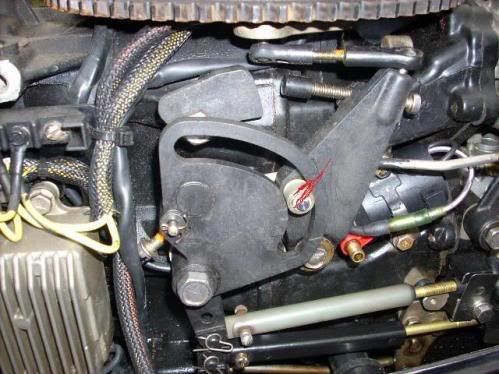Re: 98 Johnson 50
Other than the good suggestions you've already got I have a couple of ideas based on personal experiences with those engines.
First off they are very good little engines. They work much better on gasoline not laced with ethanol though, even more so than some other engines. The trouble is in the emulsion chamber of the carburetor. Even with the oil injection system you have oil mixed in the fuel, but with oil, gasoline, and now ethanol mixed together and then allowed to sit for any length of time, (a week is enough) in that emulsion chamber, it will form a sort of gooey substance that will not flow freely through the jets of the carb. I've seen it or more than I can count of these engines. You can clean the gunk out of it and it will return. The cure I've found is easy enough now that you've disconnected the oil injection. Run the fuel out of then engine before you allow it to sit even for as little as a week. You've likely got a fixed fuel connection at the engine so I'd suggest a disconnect or a fuel cut off valve as close to the engine as you can get it.
If you want to try cleaning the emulsion chamber yourself it's not terribly difficult. There are minor variations from one year model to the next on those carbs but most of them have a plug at the top of the carb on the front. You can access it by removing the breather. Take the plug out and I like to use BMC engine tuner in a spray can. First I shoot some compressed air into the hole exposed by removing the plug then I give it a shot from the engine tuner. Allow it to sit for fifteen minutes or so and follow up with another shot from the compressed air. Reassemble the breather and try the engine again. If you're lucky you'll see a big improvement in running quality from that simple procedure. Folks who have never experienced this problem may tell you I'm crazy but it sure works for me.
I've also noticed that they've got those engines running fairly lean from the factory. I like to increase the size of the orifice by a couple on steps on the mid range and on the high speed. Back in the early nineties I had an engine surging and hesitating much like yours and tried this. It worked fine, then I suggested it to the OMC service rep who of course said he'd never heard of it. Shortly after that conversation OMC came out with a service bulletin suggesting what I'd done. Go figure. It reminds me of the time when I showed a service rep the pee stream indicator for a water pump I'd installed on an Evinrude engine back in the early '70's. He told me it may cause problems by starving the engine for cooling water where I'd tapped into the block. Shortly after that they were a standard feature on Evinrude and Johnsons, and now used throughout the industry.





















